|
Can you identify this house - still standing in the Village - from this old postcard sent in 1911? The writer, who was in Pretoria in South Africa, says it is a "quaint old corner"
|
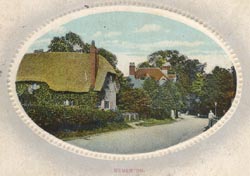 |
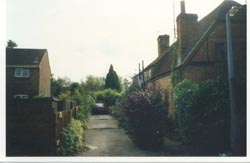 |
This house is now numbers 84 to 86 Lower Road, in the heart of the village, set longways on to the road. Its present day appearance as two semi detached cottages gives us no real idea of its age.
|
|
The Royal Commission survey of Historic Monuments for Salisbury tells us it is a cruck cottage, originally constructed of 5 pairs of curved oak beams, as shown in the drawing. These went right down to the ground, with the walls originally made of wattle and daub.
|
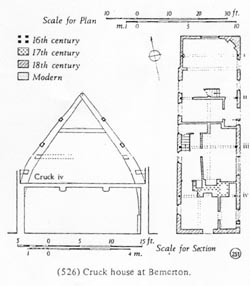 |
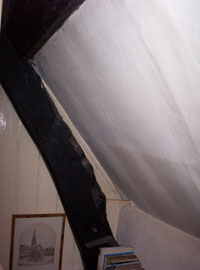 |
The Royal Commission Survey dates the building from the 16th century but the experts disagree! Wiltshire Buildings Record volunteers have surveyed the building and from their inspection of the roof timbers, comparing it with other ancient timber framed buildings in the county they date it as 13th century - perhaps 800 years old! The photo shows one of the cruck beams - you can see how it curves.
|
|
We think that the house was a farmhouse for almost all of its history.
The watercolour shown here in black and white is in Salisbury Library's Edwin Young collection and we think it was painted in the 1870's. It shows the side of the building facing south across the water meadows, with a barn and other farm buildings around the farmyard. The small building in the centre at the back used to be known as The Wood House and can still be seen in Hadrian's Close. During much of the 19th century the farmhouse was occupied by the Cottle family..
|
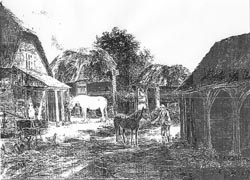 |
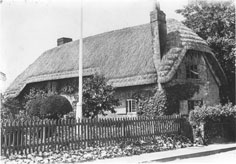 |
Anne Trevett, who lives in number 86, has researched the history of the house and thinks that it remained a farmhouse right up to the 1880's when an agricultural depression led to many farmers going out of business. The next thing we know for certain is that the house was bought for use as the Parish Room in the 1890's. This photo shows it in the early 1920's when Mrs Offer had come to live there as caretaker.
|
|
All sorts of things happened in the Parish Room: people still living in and around the village remember having some school classes in the front half of the building that was still a medieval hall, the Parish Council met, there was a library and the village nurse saw patients in the room that is now the sitting room of number 86 . This flyer, found in a file in the County Record Office, shows that it was the centre of good works in the early years of the last century, long before the days of the welfare state.
|
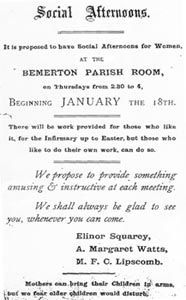 |
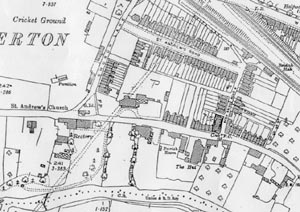 |
The Parish Room caretaker also looked after The Hut - the Village Hall that was at the heart of all village activities from the 1920's to the 1960's. We will be adding a separate page on The Hut and people's memories of all the activities that went on there.
|
|
It all came to an end in the 1960's, when The Hut and church land around and behind the Parish Room was sold off to form Hadrian's Close. The Parish Room itself was almost demolished, but was saved by the intervention of Mr Squarey, who lived in the big house on Lower Road called Belvedere. He bought The Parish Room and converted it into 2 cottages, selling them into private ownership.
|















